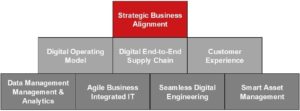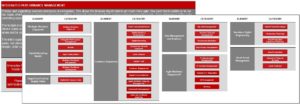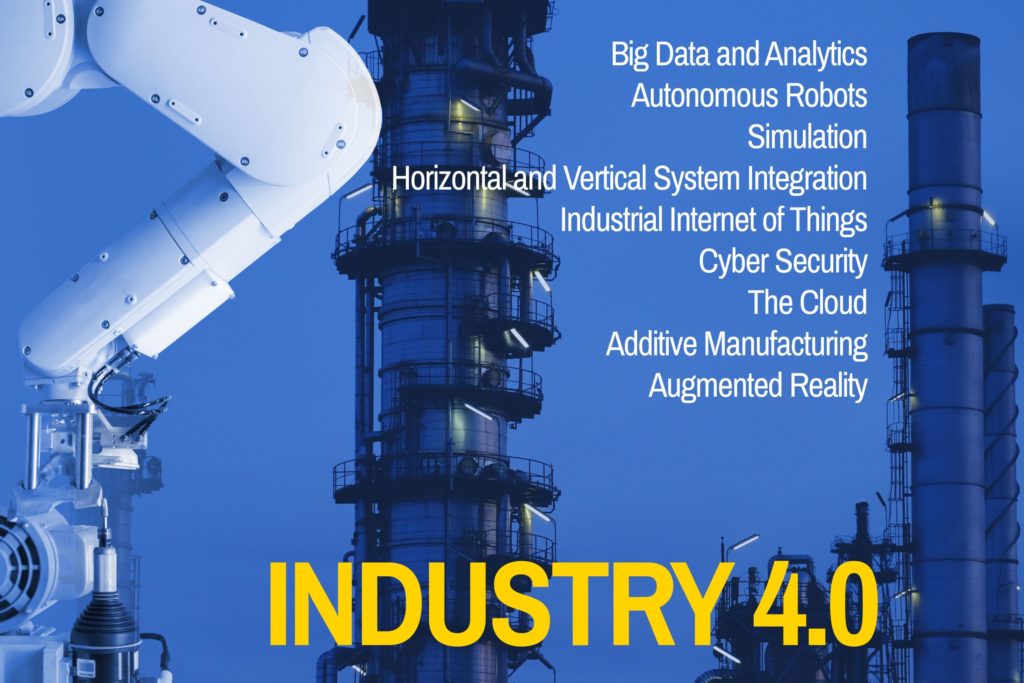ACCELERATE YOUR OPERATIONS PERFORMANCE WITH THE AXISTO INDUSTRY 4.0 MATURITY ASSESSMENT (AIMA)
INVESTING IN INDUSTRY 4.0 TECHNOLOGIES YIELDS SIGNIFICANT BENEFITS
In 2018 the World Economic Forum (WEF) launched an initiative, Shaping the Future of Advanced Manufacturing and Production, to demonstrate the true potential of Industry 4.0 technologies to transform the very nature of manufacturing. Learnings from 69 frontrunner companies boosting 450 use cases in action reveal that organisations investing in Industry 4.0 technology are realising significant improvements in productivity, sustainability, operating cost, customisation and speed to market.
Here are just a few numbers from the 450 use cases: labour productivity up by 32% to 86%, order lead times down by 29% to 82%, field quality up 32%, manufacturing costs down 33%, OEE up 27%, new product design lead time down 50%.
Additionally, frontrunner companies showed that by investing in Industry 4.0 technologies they can solve business problems while simultaneously reducing environmental detractors such as waste, consumption and emissions. While the greatest environmental benefits come from core green sustainability initiatives (such as commitments to renewable energy), Industry 4.0 use cases have shown significant environmental impact as well, reducing energy consumption by more than one-third and water use by more than one-quarter.
Out of the 69 frontrunners within the WEF initiative that exist to date across the globe, 64% have been able to drive growth by adopting Industry 4.0 solutions. In all those cases, with little to no capital expenditure, they were able to unlock capacity and grow by coupling some of the technology solutions together with a much more flexible production system. The business case is big and the pay back is short, both for large companies and for SMEs.
HOWEVER, MOST COMPANIES STRUGGLE TO IMPLEMENT
Most companies struggle to start and scale an Industry 4.0 transformation because they lack people with the right skills and knowledge and because of a limited understanding of technology and vendor landscape. On average, 72% of companies don’t get beyond the pilot phase.
AIMA enables manufacturing companies to understand where they stand and to design an implementation roadmap that helps them start their Industry 4.0 implementation journey or progress to the next level. AIMA assesses your operations along eight elements, as shown in Figure 1.

In total, the eight elements are made up of 33 categories (see Figure 2), and each category spans the four fundamental building blocks of Industry 4.0: processes, technology, people and competencies, and organisation.

HOW AIMA SUPPORTS YOU ON YOUR INDUSTRY 4.0 IMPLEMENTATION JOURNEY
AIMA helps you:
- build knowledge
- tear down interdepartmental walls and create strategic alignment
- understand where your operations stand – what is strong and must be maintained
and what needs to be improved - understand what your key areas are and what you need to focus on.
AIMA helps you establish a company-specific interpretation of key principles and concepts. It creates an improved case for change and provides more momentum to implement the change.
HOW AIMA WORKS
AIMA consists of four steps:
- Preparation – get to know the members of the leadership team and understand: the vision and strategy, how the team views market developments, challenges, opportunities and how the company develops within this context and inventory of expectations for the next days.
- The first workshop day – identification of and alignment on the case for change: introduction to Industry 4.0 and explore how it affects the strategy (execution), test the extent of alignment within the leadership team and identify the (/ check if there is a) case for change.
- The second workshop day – the Industry 4.0 Maturity Assessment: assessing operations using a selection from the AIMA categories, prioritising the KPIs and identifying the focus areas.
- The third workshop day – design of the implementation roadmap: sequence of steps that address processes, technology, people & capabilities and organisation, identification of risks and design of a risk mitigation plan.
Focusing on these areas will accelerate performance improvements in operations. AIMA provides the insights, designs an implementation roadmap and is a strategic tool to regularly assess progress and refine your roadmap based on new insights. Starting at the operations leadership level allows us to create an overall framework. AIMA is then deployed at the next level down into respective factories. Again, we begin with a preparation; followed by three workshop days, now with the factory leadership team:
- Preparation – get to know the members of the factory leadership team and understand: the factory vision and strategy, how the team views market developments, challenges, opportunities and how the factory develops within this context and inventory of expectations for the next days.
- The first workshop day – identification of and alignment on the case for change: introduction to Industry 4.0 and explore how it affects the strategy (execution), test the extent of alignment within the factory leadership team and identify the (/ check if there is a) case for change.
- The second workshop day – the Industry 4.0 Maturity Assessment: assessing operations using a selection from the AIMA categories, prioritising the KPIs and identifying the focus areas.
- The third workshop day – design of the implementation roadmap: prioritisation of factory KPIs and the identification of focus areas, sequence of steps that address processes, technology, people & capabilities and organisation, identification of risks and design of a risk mitigation plan.
Making improvements in these focus areas will make the biggest impact on the factory’s performance within the overall framework. Leveraging this cascaded approach creates the biggest wins for the whole business rather than just a sub-optimisation of an individual factory.
AIMA OUTCOMES FOR YOUR ORGANISATION
AIMA provides four key outcomes:
- Understanding of Industry 4.0, its key principles and concepts, and how they affect strategy (execution)
- Alignment within the operations leadership team and factory leadership teams
- Understanding of your Industry 4.0 maturity level / readiness
- Priority of focus areas to create short-term business value within a long-term context
PUT YOUR PEOPLE AT THE CENTRE OF YOUR INDUSTRY 4.0 IMPLEMENTATION
AIMA will generate initial momentum. However, it is worth noting that any Industry 4.0 implementation will only be successful if you put your people at the centre of it.
The biggest challenge for a company is not in choosing the right technology, but in having a lack of digital culture and skills in the organisation. Investing in the right technologies is important – but the success or failure does not ultimately depend on specific sensors, algorithms or analysis programs.
The crux lies in a wide range of people-oriented factors. Axisto supports you in the development of a robust digital culture and ensures change is developed from within and is driven by clear leadership from the top.
WHY AXISTO?
Axisto was founded in 2006 to help companies accelerate their operational performance – fast, measurable and lasting. We have executed more than 150 projects across Europe.
We have concrete on-the-ground experience, which is why our approach is practical and pragmatic. We combine subject-matter expertise with excellent change management skills.
We see change through and do whatever it takes to make our clients successful.



